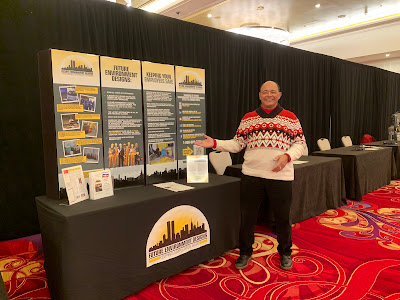- The culprit in this chemical exposure story is a chemical known as n-propyl bromide, or nPB. “Medical researchers, government officials and even chemical companies that once manufactured nPB have warned for over a decade that it causes neurological damage and infertility when inhaled at low levels over long periods…” So we know that exposure to this chemical is hazardous (fact!).
- Did we have an exposure? “For about five years, Ms. Sheri Farley, 45, stood alongside about a dozen other workers, spray gun in hand, gluing together foam cushions for chairs and couches sold under brand names like Broyhill, Ralph Lauren, and Thomasville. Fumes from the glue formed a yellowish fog inside the plant, and Ms. Farley’s doctors say that breathing them in eventually ate away at her nerve endings, resulting in what she and her co-workers call “dead foot”." That sounds like an exposure to us (fact!).
- What did the employer do to protect the workers? “Even as worker after worker fell ill, records from the Occupational Safety and Health Administration show that managers at Royale Comfort Seating, where Ms. Farley was employed, repeatedly exposed gluers to nPB levels that exceeded levels federal officials considered safe, failed to provide respirators and turned off fans meant to vent fumes." So the employer knew the dangers and didn't protect the workers (fact!).
- What's a willfull violation? According to OSHA, a willfull violation is a violation that the employer intentionally and knowingly commits or a violation that the employer commits with plain indifference to the law. OSHA may propose penalties of a maximum of $70,000 for each willfull violation (fact!).
| 3D diagram of n-propyl bromide molecule. Prepared with Discovery Studio Visualizer 1.7 and GIMP 2.2 (Photo credit: Wikipedia) |
What does the Director of OSHA have to say about this? “I’m the first to admit this is broken,” said David Michaels, the OSHA director, referring to the agency’s record on dealing with workplace health threats. “Meanwhile, tens of thousands of people end up on the gurney.” You're the director and that's your answer. Get your act together and fix the problem. You know there's a problem and you're not fixing it. You should be fired! You've been the OSHA Director for what four years and we must admit you've done a lot of good. However, at the same time this issue of protecting worker health has continued to fester and you know its broken and you haven't fixed it. If you were on Donald Trump's Apprentice program, you would've been fired.
Let's look at the issue that the business claims they can't afford to protect workers. Based on the article it says Royale "which employs about 100 workers and had around $7.5 million in sales in 2011", in addition, Royale has also "paid nearly a half-million dollars - in court settlements, required upgrades....". Where did these business owners get their education on running a business? Here are some statistics from the article that makes you wonder about business owners and support a need for OSHA to do a better job of protecting worker's health:
- "Chronic ailments caused by toxic workplace air - black lung, stonecutter's disease, asbestosis, grinder's rot, pneumoconiosis, - incapacitate more than 200,000 workers in the United States annually. More than 40,000 Americans die prematurely each year from exposure to toxic substances at work - 10 times as many as those who die from refinery explosions, mine collapses and other accidents that grab most of the news media attention."
- Occupational illnesses and injuries like Ms. Farley's cost the American economy roughly $250 billion per year because of medical expenses and lost productivity, according to government data analyzed by J. Paul Leigh, an economist at the University of California, Davis, more than the cost of diabetes or chronic obstructive pulmonary disease. Roughly 40 percent of medical expenses from workplace hazards, or about $27 billion a year, is paid by public programs like Medicare and Medicaid."



